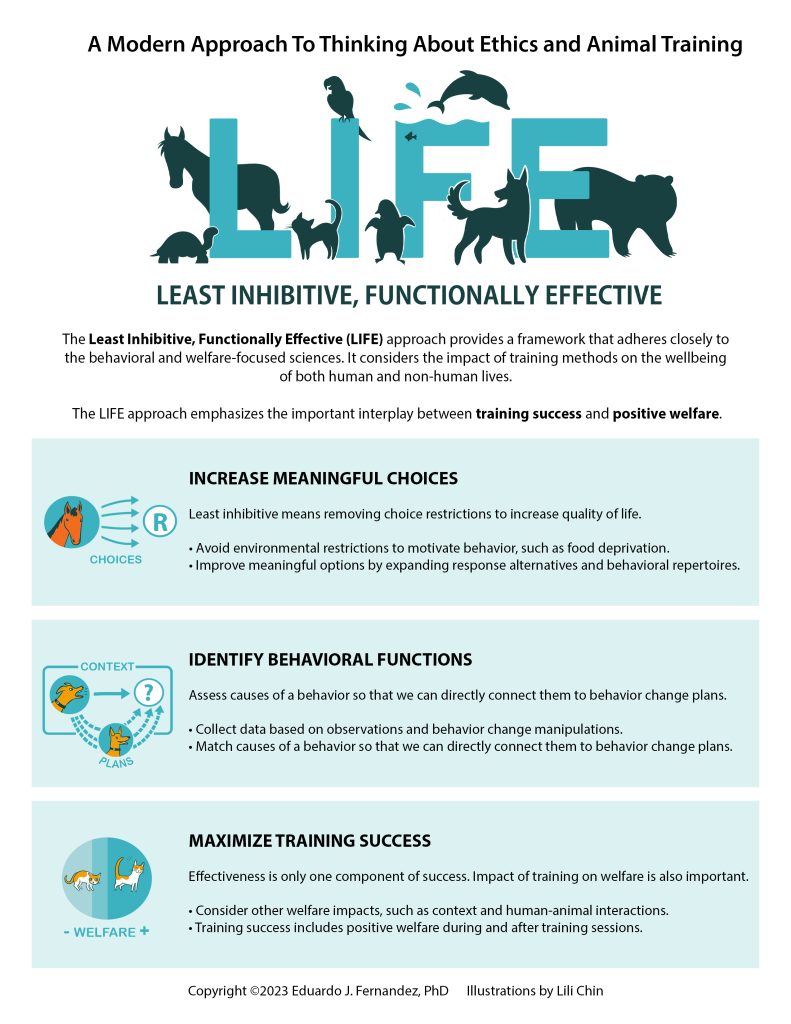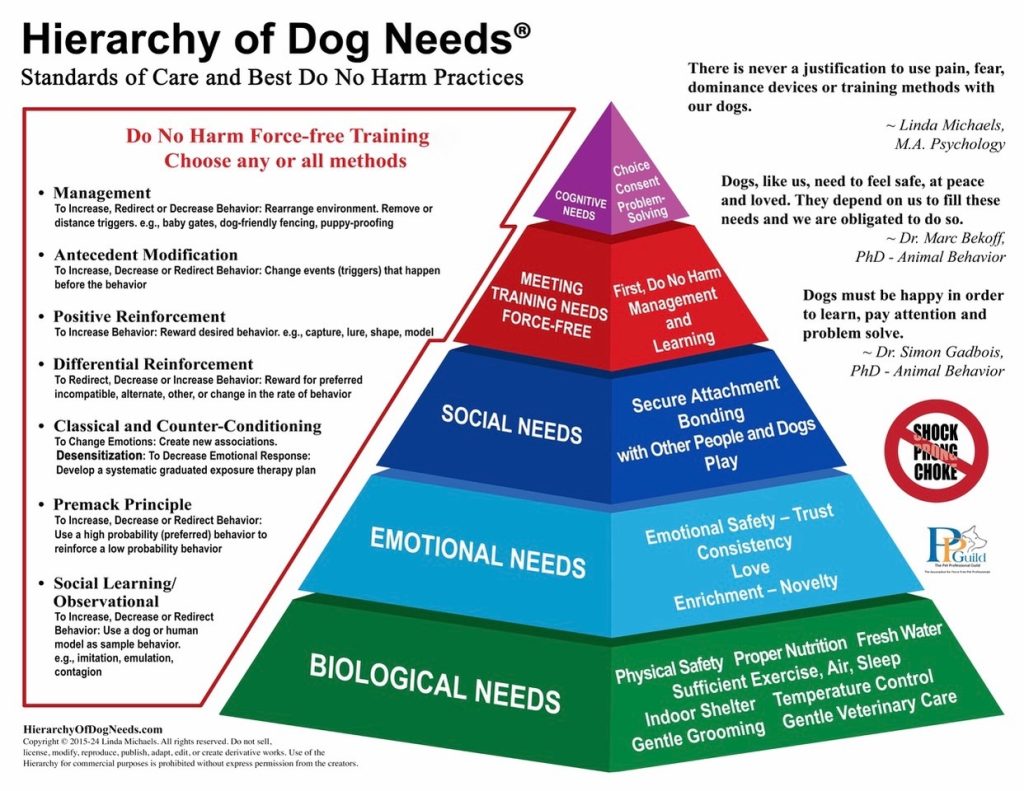Best Practices
Best Practices
At PPG, we encourage professional autonomy within the confines of our mutually agreed principles.
Written by Debra Millikan, Dip.ABST, Dip.DTBC, PABC
As members of PPG and in accordance with PPG’s Guiding Principles, “Members understand force-free to mean, no shock, no pain, no fear, no physical force, no compulsion-based methods are employed to train or care for a pet.” It is also the belief that experienced trainers must begin their behavior change programs with the least invasive and least aversive training protocols necessary to change the problematic behavior. Education is one of the key goals of PPG so its members have access to resources and thus training tools that meet the needs of their clients and are in line with the guild’s Guiding Principles. Our future provisional member mentor programs will enable less experienced trainers to learn these training techniques and broaden their toolkits.
Allowing Professional Autonomy
A professional must be allowed autonomy to work within the guidelines of his/her professional code of practice. PPG members are encouraged to use their individual methods of choice from within governing principles and guidelines. As a governing body, the PPG endeavors to choose well-researched methods that are least intrusive and most effective in its information to members.
According Dignity
Regarding human learners, Bailey and Burch explain, “Many of the clients that we serve are not able to effectively represent themselves. They may be nonverbal or simply unable to get someone to listen to them. If their wishes are unknown and they are unable to make choices, they may become depressed and present behavior problems … ”1 This statement can also be used to guide direction for animal training methods. Methods should allow choices that can be positively reinforced, further empowering the animal to progress.
Treating Others with Care and Compassion
“If, as a behavior analyst (here read animal trainer), you respect the autonomy of clients (both human and non-human), work to benefit them, and devise programs that accord them dignity, you will automatically be treating clients with care and compassion.”1 PPG members should actively factor this into method development and use.
Respecting Autonomy
“To respect one’s autonomy means to promote his or her independence or self-sufficiency.”2 Bailey and Burch say that “… prompting, shaping, chaining, fading and the use of conditioned reinforcers”1 aid self-empowerment but should be used judiciously to ensure safety at all times. Although their book relates to the human application of behavior analysis, the same principle can be applied to animal training.
Maintenance of Best Practices
Without a prescribed method of determining best practices, an organization will flounder and/or diminish. With a willingness to adhere to the principles stated above, with regular oversight by our caring, well-versed governors, the PPG will help guide animal trainers to maintain a standard of humane, effective best practices. This, too, will evolve with experience, like the behavior of the animals we teach!
Excerpted from Millikan, D. (June 2012). PPG best practices and standards. Barks from the Guild, 1(2), 8–11.
References
1. Bailey, JS, Burch MR (2005). Ethics for Behavior Analysts. Routledge, New York, USA
2. O’Heare, J. (2012) The least intrusive effective behavior intervention (LIEBI) algorithm and levels of intrusiveness table: 2012 updated version. Association of Animal Behavior Professionals.
Best Practice Models
The following models are recommended approaches that meet PPG’s best practices standards.
Least Inhibitive, Functionally Effective (LIFE)

In the last couple of decades, the Least Intrusive, Minimally Aversive (LIMA) model of animal training has been used to describe reward-based animal training methods. However, a number of problems were built into the creation of LIMA and continue to exist today, including (a) a lack of clarity in its terminology, (b) ambiguity in desired training approaches, and (c) a history of aversive training methods justification.
Least Inhibitive, Functionally Effective (LIFE), developed by Dr. Eduardo Fernandez, is an alternative approach to ethical animal training methods that specifies (1) increasing choices by inhibiting less, (2) the importance of function, and (3) defining success as more than simply being effective.
Click on the graphic above for more information about the LIFE model.
Hierarchy of Dog Needs

The Hierarchy of Dog Needs (HDN) is a modern, unique and groundbreaking model of wellness and thriving that illustrates standards of care and best force-free practices. It is an adaptation of Maslow’s Hierarchy of (human) Needs™ adapted to meet dogs’ needs.
Dog needs are listed hierarchically for ease in visualization and understanding. We first meet our dogs’ biological needs, emotional needs and social needs. However, the levels are fluid, not static, and should be thought of as not having linear boundaries, but more like waves with undercurrents and cross-currents between the levels. Once these foundational needs are met, the hierarchy describes the methods that force-free trainers use to modify behavior: management, antecedent modification, positive and differential reinforcement, counter-conditioning and desensitization, the Premack Principle, and social learning. The exclusively force-free behavior modification best practices and methods, embedded with an ethical code, may be safely and effectively used in any order or combination.
Click on the graphic above for more information about the Hierarchy of Dog Needs.
